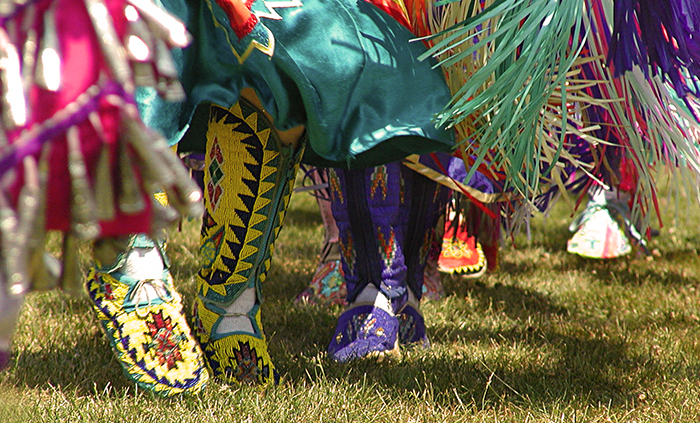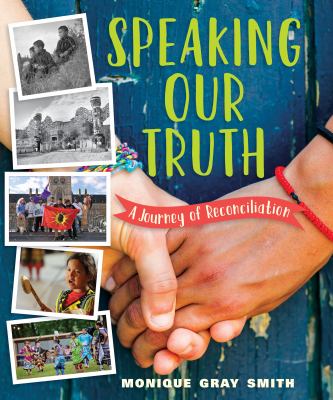November is National American Indian Heritage Month: Books that celebrate the diverse and distinct cultures, traditions, and histories
Posted on November 7, 2017 at 6:00 am
by Sheri Boggs
November is National American Indian Heritage Month, first designated by President George H.W. Bush in 1990 and recognized as a time for celebrating the diverse and distinct cultures, traditions, and histories of the indigenous peoples of the United States.
For libraries, museums, and other cultural institutions, this is a matter of significance and sensitivity. A major part of our mission to our communities is to provide information that’s historically accurate, culturally sensitive, and representative of different viewpoints. And while entertainment is also important, particularly for libraries, it’s important that the stories we offer are similarly diverse and respectful.
It’s not always easy to get this right. But many of our staff are learning, and sharing information, and striving to offer a collection that more accurately represents the experiences of American Indians. Library District staff recently attended sessions dedicated to American Indian literature at the Pacific Northwest Library Association and the Washington Library Association conferences earlier this fall and came back with fantastic notes, booklists, and other resources.
Washington state recently adopted legislation that mandated the creation of a curriculum—Since Time Immemorial—endorsed by all 29 federally recognized tribes in the state. And in response to the We Need Diverse Books movement, publishers are responding with better, more culturally aware books.
Not everything being published today is fantastic—and there are probably even some recent titles in our collection that I wouldn’t heartily recommend. But one resource I would highly recommend is the American Indians in Children’s Literature (AICL) website. Founded by Debbie Reese, a tribally enrolled Nambe Pueblo woman with degrees in Education, School Administration, and Library and Information Science, American Indians in Children’s Literature exists to offer critical analysis of children’s and young adult materials in which indigenous people are represented.
As a buyer I often check AICL and have learned to watch for such common missteps as an author portraying American Indian culture as one monolithic identity—when there are actually more than 500 federally recognized tribes in the United States today—or co-opting stereotyped American Indian traditions or characters as spiritual devices. “In short, there’s a lot to know, and a primary purpose of American Indians in Children’s Literature (AICL) is to help you know who we are,” Reese writes on the website. “Knowing who we are can help you understand why we strenuously object to being misrepresented.”
Here are some recent additions to our collection that I am glad to recommend:
Speaking Our Truth: A Journey of Reconciliation by Monique Gray Smith (ages 10+)
Although this title focuses on Canadian history, it’s important to have it in our collection as the exact same situation was happening on this side of the border. In the 19th and 20th centuries, thousands of indigenous children were pulled from their families and sent to live in boarding schools far from their families and their tribes. Once there, children were often abused, malnourished, forced to assimilate European traditions, and robbed of their names and languages. Smith explores the history of more than 150 years of systemic cultural warfare, with interviews with survivors and their descendants. Throughout readers are invited to think and ask questions, and to recognize ways in which they can be part of reconciliation.
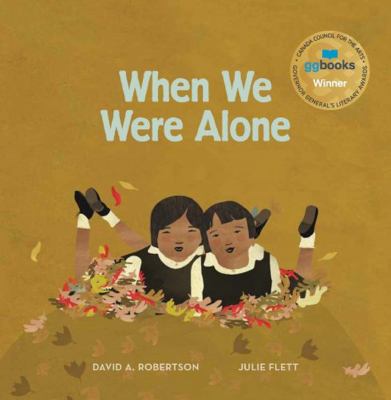
When We Were Alone by David Alexander Robertson (ages 4–8)
This is a sensitive look at the residential school legacy for younger readers. A young girl helps her grandmother in the garden and asks questions about why she wears so many bright colors, why she wears her hair so long, and why she whispers to the birds in Cree. Her grandmother explains that once, when she was young, she was sent away to school where she had to dress in drab colors, cut her hair, and speak only in English. Julie Flett’s evocative artwork brings a warmth and friendliness to a story that is inherently sad, but hopeful. Her grandmother’s one refuge was that her sister was at the school too, and the story concludes as she takes her granddaughter’s hand and shares, “Now, I am always with family.”
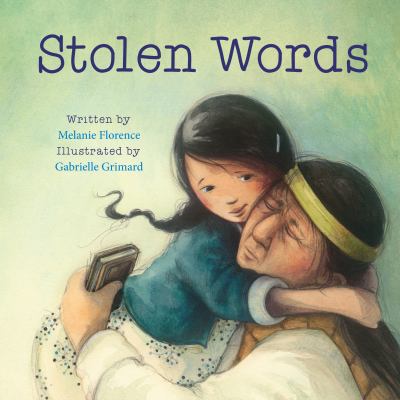
Stolen Words by Melanie Florence (ages 4–8)
Stolen Words is a natural companion book to When We Were Alone. In this instance, a young girl makes a dreamcatcher and learns about her heritage in school, but when she returns home to ask her grandfather how to say his name in Cree, he can’t remember. He tells her about his childhood, and how he was sent to boarding school and his words were all taken away from him. Determined to help, the granddaughter and her teacher find a well-worn, old paperback in the school library, and she finds a way to return her grandfather’s words to him.
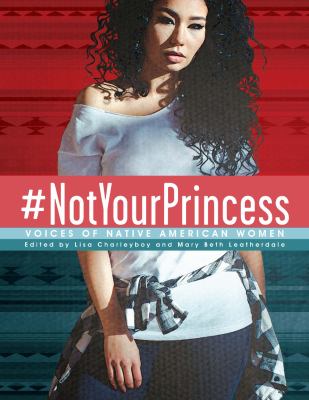
#NotYourPrincess: Voices of Native American Women, edited by Lisa Charleyboy and Mary Beth Leatherdale (ages 13+)
This fiery and much-needed anthology of contemporary American Indian women’s voices explodes the stereotype of indigenous women being the docile, nature-loving, make-believe fabrications of popular culture (especially Disney). The stories throughout explore survival and resilience, often in the form of poetry, visual art, literature, and song. There are also profiles of activists and cultural leaders, including a 13-year-old girl who gathered more than a quarter-million signatures protesting the Dakota Access Pipeline and the founders of the Real NDNZ Re-Take Hollywood project, in which classic photos of iconic movie stars are recreated using contemporary American Indian actors. Inspiring and necessary.

Mission to Space by John Herrington (ages 5–8)
Astronaut John Herrington, an enrolled member of the Chickasaw tribe and the first enrolled American Indian in space, shares what it takes to travel to and live on the International Space Station (ISS). Walking young readers through the rigors of his training, the excitement of hurtling through space, and the tasks he completed on the ISS (including a spacewalk 200 miles above the earth), this engaging picture-book biography also includes an English-Chickasaw glossary in the back and illustrates that the Chickasaw language is still in use today.
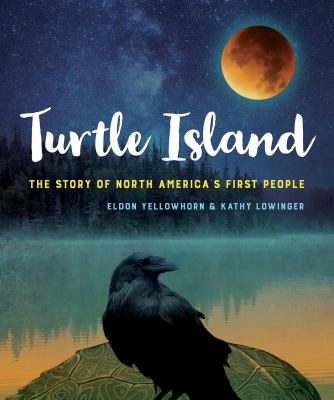
Turtle Island: The Story of North America’s First People by Eldon Yellowhorn (ages 12+)
Taking the title from various indigenous storytelling traditions in which North and South America were formed on the back of a turtle, Turtle Island: The Story of North America’s First People is a look at the history of the indigenous people of North America both before and after contact with Europeans beginning in 1492. Using new discoveries in archaeology and science, Turtle Island sets out to recreate what life was like for Native Americans as far back as 14,000 years ago, while also illustrating how contact with European settlers decimated tribes. The book ends on a hopeful note, exploring how contemporary reparations and a growing interest in preserving traditional languages and cultural practices are a new moment in a long and recently painful story.
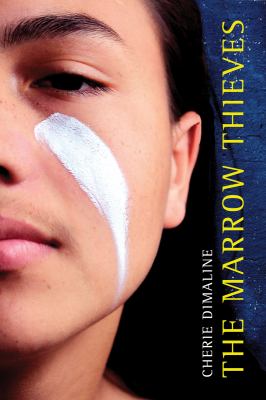
The Marrow Thieves by Cherie Dimaline (ages 13+)
In a dystopian North America that’s unfortunately not that hard to imagine, there is widespread damage wrought by climate change: the Great Lakes are poisoned by pollution and pipeline leaks, the coastal cities are half underwater, and vast stretches of land are uninhabitable. The world has gone mad and indigenous people are the only ones left who can dream but are endangered by this very ability. Pursued for the dream-making properties of their bone marrow, entire tribes are captured by government “Recruiters,” but a handful of teen escapees from different tribes and with different heartbreaking stories fight to save their loved ones and stay alive.
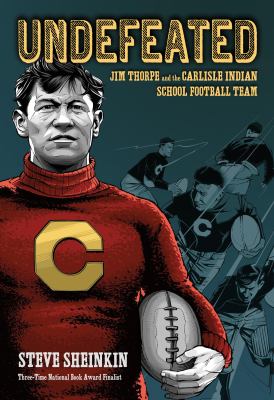
Undefeated: Jim Thorpe and the Carlisle Indian School Football Team by Steve Sheinkin (ages 12+)
This is the story of football player and track and field star Jim Thorpe, who was once considered “the best athlete on the planet.” Sheinkin delves into the history of the Carlisle Indian School, presided over by Richard Henry Pratt, who believed that, in order to “help” his students, the school needed to “kill the Indian and save the man.” Thorpe, whose parents came from a mix of white and Indian cultures, came to the school at the age of 15 and was discovered by Coach Glenn “Pop” Warner. Thorpe becomes undefeated on the football field and later wins a gold medal in the 1912 Olympics. Sheinkin is a skilled nonfiction writer, and here he explores a complex story involving institutionalized racism, two separate but interwoven biographies of remarkable men, a long and regrettable chapter in American history, and the emergence of a new sport.
Tags: #NationalAmericanIndianHeritageMonth, American Indians, American Indians in Children's Literature, culture, cultures, diversity, heritage, histories, indigenous peoples, National American Indian Heritage Month, Since Time Immemorial, stereotypes, tradiction, traditions, United States

